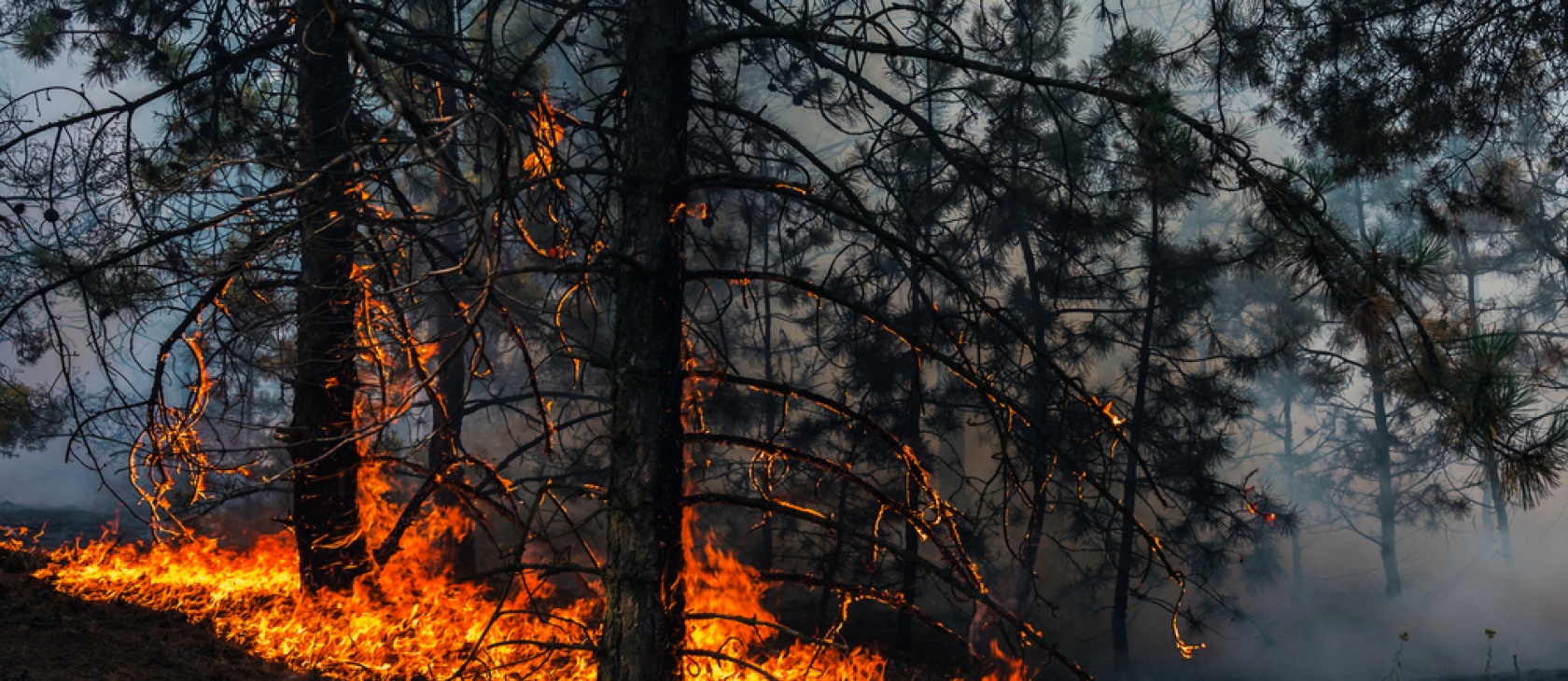Standing in a smoke-filled, charred stand of trees in northern California late this summer, Gov. Gavin Newsom delivered an impassioned, blame-shifting analysis of the causes of wildfires that raged through his state.
“This is a climate damn emergency,” he said. “This is real, and it’s happening.”
Hyperbolic one-liners crafted for the evening news are the stock in trade for politicians, especially for a man like Newsom with his presidential ambitions. But you get the distinct impression that he tossed his glancing acknowledgement that fire suppression, or fire management policies, “going back a hundred years” may have contributed to the wildfires out there to dispense with it and move on to the real problem of climate change. That, and embracing “a seriousness of consciousness around science and Mother Nature and the realities of the world that we’re living in.”
Poor Mother Nature. She’s been dragged into these climate debates by politicians, climate “experts,” and journalists for so long that she must be at her wit’s end. Could the bipolar thinking, which veers towards extremes on environmental problems, get any worse? Either she groans in agony as the climate crimes of a stupid and heedless humanity pile up (according to the Left) or Mother is just fine, thank you, and all of this global warming stuff is a Marxist plot (on the Right).
Someone needs to send Gov. Newsom a copy of Michael Shellenberger’s new book, Apocalypse Never: Why Environmental Alarmism Hurts Us All. Shellenberger, a science writer and researcher, started life as a 15-year-old activist for Amnesty International and went on to work for various other green campaigns. Over time, his field work and journalistic projects in the Amazon and other places led him to a deeper understanding of problems that do not yield to fundraising slogans or campaign promises. His work is refreshingly free of ideological presets that leave no room for uncomfortable facts.
California wildfires, he points out in the book, are of two types. There are wind-driven fires on coastal shrublands fueled by chaparral. This is also where most residential housing is located. Elsewhere, in mountain ecosystems like the Sierras, “there are too few prescribed burns.” During the last century, the U.S. Forest Service and other forestry agencies extinguished most fires, which are a natural occurrence. This led to an unnatural accumulation of wood fuel.
Isn’t Gov. Newsom correct, then, that all those governors who preceded him are the real culprits? And isn’t climate change a bigger factor, as we have been told nonstop by news reports about the fires? Like a lot of complex questions – and climate conditions must be toward the top of the list – it’s not that simple. There are combining factors. Still, Shellenberger puts more weight on disastrously bad fire suppression policies, and not just in the United States.
“The bottom line is that other human activities have a greater impact on the frequency and severity of forest fires than the emission of greenhouse gases,” he asserts. “And that’s great news, because it gives Australia, California, and Brazil greater control over their future than the apocalyptic news media suggested.”
And, no, Leonardo DiCaprio and other celebrities weren’t correct last year when they mobbed social media to tell the world that fires in the Amazon were “destroying the earth’s lungs.” That’s a fetching image to describe what a forest doesfor our atmosphere. And it’s just wrong.
First of all, the Amazon, according to one ecologist, contributes a net zero amount of oxygen to the world’s supply. It stores carbon, but only about 5% of the global supply. This is not to dismiss deforestation as a problem, especially in the Amazon and other old-growth forests around the world. But activists have grossly overstated what’s going on. “In 2019, the area of the Amazon land deforested was just one-quarter of the amount of land that was deforested in 2004,” Shellenberger points out.
What’s more, as has been widely observed, the planet is actually greening. Again, a number of factors come into play, including greater carbon dioxide in the atmosphere, greater agricultural productivity, and conservation efforts. “There is little evidence that forests around the world are already at their optimum temperature and carbon levels,” he writes. “Scientists find that higher levels of carbon dioxide in the atmosphere available for photosynthesis will likely offset declines in the productivity of photosynthesis from higher temperatures.”
Shellenberger’s telling of the long history of anti-nuclear campaigning by the environmental Left, celebrities like Jane Fonda, activists like Bill McKibben, and politicians like New York Rep. Alexandria Ocasio-Cortez should be required reading for anyone who is serious about reducing carbon emissions. The rank dishonesty of the anti-nuclear crowd and its manipulation of public opinion with loaded and fearmongering emotional appeals has, for the most part, taken nuclear power off the table for Americans. Shellenberger writes:
Today, antinuclear groups continue to deceive and frighten the public about nuclear energy in their efforts to shut down nuclear plants in the United States, Europe, and around the world. They do so with an eye to triggering fears of nuclear apocalypse. They claim nuclear is not necessary because of renewables. In reality, whenever nuclear plants aren’t in use, fossil fuels must be used and emissions rise. They claim that used nuclear fuel rods and the plants themselves attract terrorists, when in reality the only ones who have attacked nuclear plants have been antinuclear activists. And they claim that radiation is cartoonishly potent.
Shellenberger is also very good in his analysis of twenty-first-century environmentalism as secular religion, complete with unshakable dogmatic givens (nuclear “bad”) and its view of “nature” as a vast, deeply interconnected system.
“[A]pocalyptic environmentalism is a kind of new Judeo-Christian religion, one that has replaced God with nature,” Shellenberger writes. “In the Judeo-Christian tradition, human problems stem from our failure to address ourselves to God. In the apocalyptic environmental tradition, human problems stem from our failure to adjust ourselves to nature.”
Here, he adds, scientists replace priests at the altar of this new religion. “I want you to listen to the scientists,” Greta Thunberg, the child activist, chirps.
Apocalypse Never is an honest, balanced book on environmental issues from a writer who cares deeply about real problems. Shellenberger’s work is refreshingly free of ideological givens, and he is confident enough to follow the facts where they lead him. The result is a book that offers hope without sugarcoating the real problems of pollution, a warming climate, and how best to conserve wildlife and wild lands.
If only Gov. Newsom would read it.
Apocalypse Never: Why Environmental Alarmism Hurts Us All
Michael Shellenberger | Harper | 2020 | 432 pages
Reviewed by John Couretas




